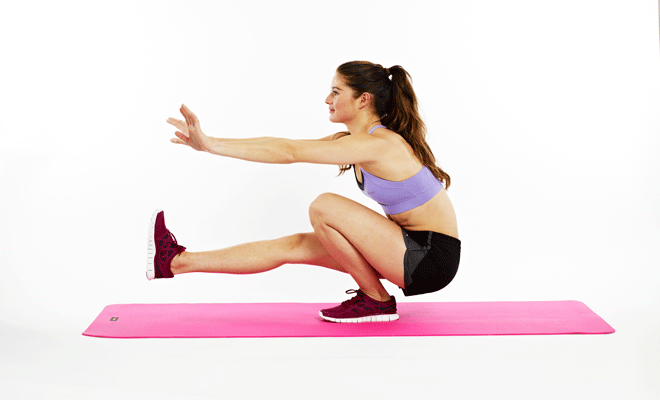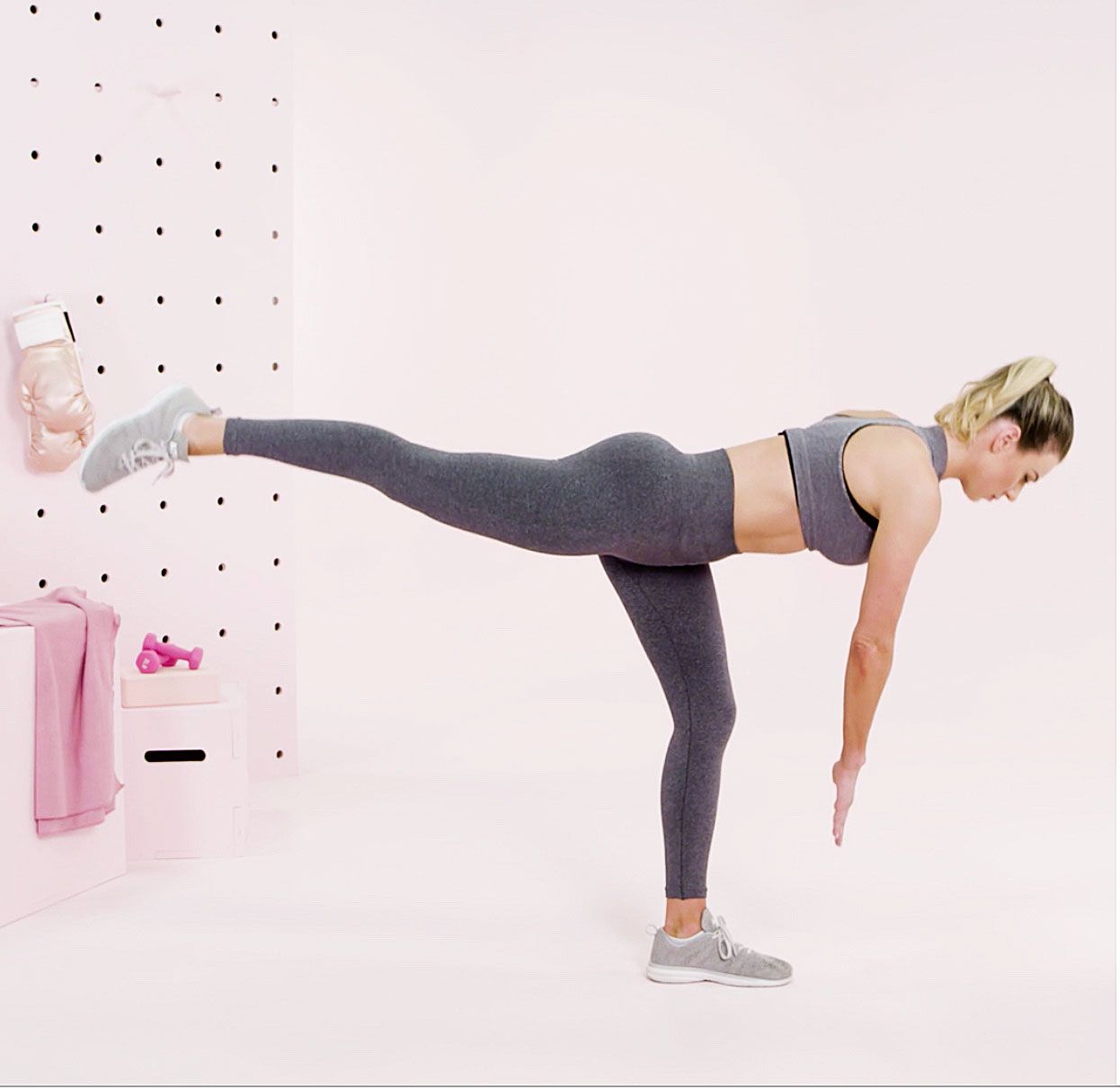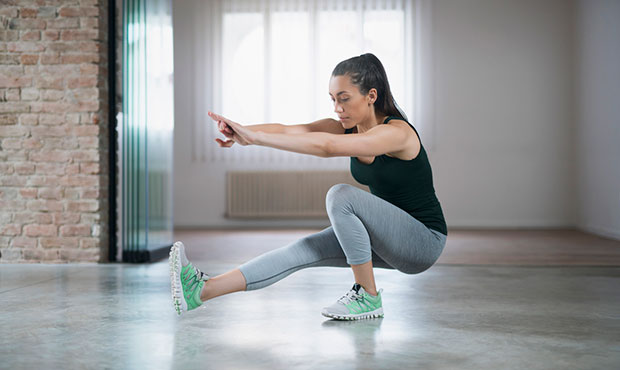There are two good reasons to turn your workout into a balancing act. First, a controlled wobble activates deep core muscles to help tighten the midsection. Secondly, it prepares athletes for that quick turn or lunge.
Before each move in this workout, engage your abdominals by tightening them—without holding your breath—as if preparing to take a punch. You’ll activate the core muscles surrounding your spine and tone your entire abdominal area. Engaged abs also help prevent injury when lifting.
If you have a medical condition, be sure to check with your doctor before trying this workout or any new fitness program.
1. One-Legged Balance

Start with this beginner’s move, keeping a stable chair or a wall within an arm’s reach. With feet together, pick up one foot with the knee facing forward or to the side. Hold the position with eyes open, then closed. Switch feet and repeat for four reps on each foot.
If any move feels wrong or unsafe to you, stop and check with a trainer. Depending on your health and physical condition, some exercises may not be recommended.
2. Leg Swings

Stand on your right leg and raise the left leg three to six inches off the floor. With arms at your sides, swing your left leg forward and backward, touching the floor for balance, while keeping your torso erect. Now, repeat the moves, but don’t allow your foot to touch the ground. And finally, swing the left foot to the left side, holding the right arm out. Switch legs and repeat.
3. One-Legged Clock With Arms
Balance on one leg, with the torso straight, head up and hands on the hips. Visualize a clock and point your arm straight overhead to 12, then to the side at three, and then circle low and around to nine without losing your balance.
Increase the challenge by having a partner call out the different times to you. Switch to the opposite arm and leg and repeat.
4. Clock on an Unstable Surface
Once you master balance moves on solid ground, try them on an unstable surface such as a BOSU platform. Stand near a wall or other support, for safety. Start in the middle of the board on two feet. When you feel comfortable, carefully give the one-legged clocks a try. It’s harder than it looks.
5. One-Legged Squat

Stand with your feet hip-width apart. Point your left foot out front, just barely touching the floor for balance, and push your hips back and down into this challenging one-legged squat position. Your right knee should be bent, chest upright, eyes forward and your arms out front. Slowly push up to return to starting position. Switch feet. Be sure the knee doesn’t push in front of the toes.
6. Single-Leg Dead Lift

Balance on your left foot, engage the abs and bend forward at the hips while reaching toward the ground with your right hand. Hold on to a 5- to 10-pound weight and raise your right leg behind you for counterbalance. Tighten the buttocks as you return to the starting position. Keep your knee relaxed and your back flat throughout the movement. Switch legs.
7. Tools and Toys for Balance
Challenging your balance may be as simple as standing on one leg or closing your eyes. But for added challenge and fun, include balance boards, balance cushions or sturdy foam rollers.
Keep safety in mind at all times: remove objects around you and stand near a wall or stable surface in case you lose your balance.


